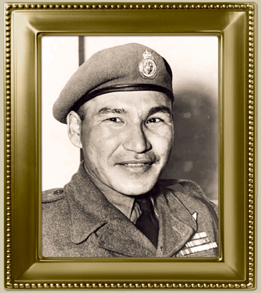Lesson 5
1. Lesson 5
Module 3: Permutations, Combinations, and the Fundamental Counting Principle
Lesson 5: Solving Probability Problems That Involve Permutations and Combinations
Focus
The pigpen cipher is a geometric substitution cipher in which symbols are substituted for letters. The symbols are derived from fragments of two tic-tac-toe boards and two X's as shown.

Using the pigpen cipher, the phrase “x marks the spot” would look like the following:

How could you determine the probability of someone guessing a coded message? Suppose you had some understanding of how the cipher worked. How would that change the probability of guessing correctly? Is order important when decoding a message?
Calculating the probabilities of more complex questions can often be assisted by permutations and combinations. Both can be used to help determine the number of favourable outcomes and the number of total outcomes.

photo: Courtesy of the Department of National Defence; frame: Photodisc/Thinkstock
This photograph shows Sgt. Tommy Prince, one of the most decorated Aboriginal Canadians to serve in the army during
World War II. He was a paratrooper who belonged to the First Special Service Force.
On September 10, 1939, Canadians found themselves in conflict again as our country declared war on Germany and entered the Second World War. Once again, Canada’s Aboriginal men and women answered the call of duty. By March 1940, more than 100 had volunteered and by the end of the war in 1945, more than 3,000 status Indians, as well as an unknown number of Inuit, Métis and First Nations peoples had enlisted.
One interesting role some Aboriginal Canadians would play in this conflict would be as “code talkers.” Soldiers . . . would translate sensitive messages into Cree so the enemy could not understand any intercepted transmissions. Once the message was received by another Cree-speaking “code talker,” it would be translated back into English so it could be understood by the recipients.
Source: Aboriginal Veterans, (Ottawa: Veterans Affairs Canada, 2011),
<http://www.veterans.gc.ca/eng/history/aboriginal-pi>; (24 February 2012).
Lesson Outcome
At the end of this lesson, you will be able to determine the probability of events involving permutations and combinations.
Lesson Question
In this lesson you will investigate the following question: What strategies can be used to solve probability problems that involve permutations and combinations?
Assessment
Your assessment may be based on a combination of the following tasks:
- completion of the Lesson 5 Assignment (Download the Lesson 5 Assignment and save it in your course folder now.)
- course folder submissions from Try This and Share activities
- work under Project Connection